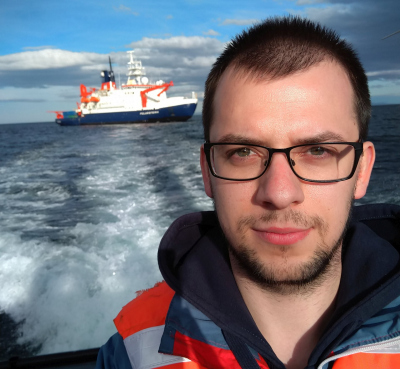- Graduate School GLOMAR
- PhD student members
- Kevin Wiegand
Kevin Wiegand
| Institution: | Institute of Environmental Physics (IUP), University of Bremen |
| Office: | NW 1, Room M-3200 |
| Phone: | +49 421 218 - 62164 |
| E-mail: | [Bitte aktivieren Sie Javascript] |
| Other webpage(s): |

PhD Project
Exchange of water mass properties between the Greenland shelf and the surrounding subpolar North Atlantic
The Labrador and Irminger Seas are affected by the northward transport of subtropical warm and saline waters within the North Atlantic Current and Irminger Current. It is observed that warming water increasingly penetrate Greenland’s fjord systems and contribute to glacial melt. In addition, an accelerated loss of mass from the Greenland ice sheet together with melting sea ice contributes to the release and propagation of cold and fresh water along the Greenland shelf. Thus, the Labrador and Irminger Seas receive great amounts of heat and freshwater. Both are impacting the buoyancy in the water column and therefore the rate of the local water mass formation. Understanding the exchange processes between the Greenland shelf and its surrounding open ocean regions, the Labrador and Irminger Seas, is of large importance to determine the melting of the Greenland ice sheet and the deep convection processes in the subpolar North Atlantic.
In my project I will analyze observational data, including data from ship-based measurements, Argo, satellites and marine mammal-borne sensors to determine and quantify the exchange processes between the subpolar North Atlantic and the Greenland shelf. In addition, I will use a high-resolution ocean model and compare it towards the observations.
Thesis Committee
| Dr. Dagmar Kieke | Institute of Environmental Physics (IUP), University of Bremen |
| Prof. Dr. Paul Myers | University of Alberta, Canada |
| Prof. Dr. Monika Rhein | Institute of Environmental Physics (IUP), University of Bremen |
| Dr. Gunnar Spreen | Institute of Environmental Physics (IUP), University of Bremen |


